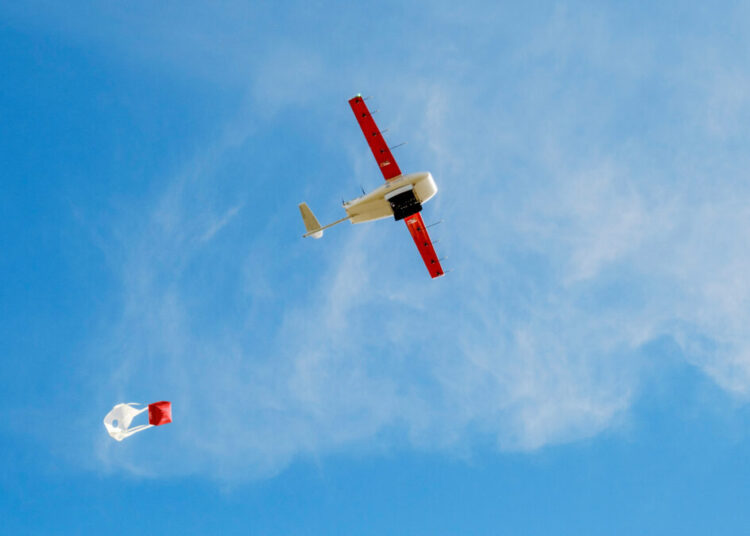This story originally appeared on flyingmag.com.
More than a year after the Federal Aviation Administration published the final, nearly 400-page report from its beyond-visual-line-of-sight (BVLOS) advisory rulemaking committee, the agency has opened the door to expanded unmanned operations for four major aviation players.
On Tuesday, the FAA announced it is seeking public comment on four requests for BVLOS waivers that would allow remote pilots to fly their aircraft where they can’t see them. The requests come from aerial data acquisition firm Phoenix Air Unmanned, unmanned aviation services provider uAvionix, and drone delivery firms Zipline and UPS Flight Forward.
Starting Thursday, the public will have 20 days to comment on the proposed waivers, allowing stakeholders to express any concerns about safety, privacy or other topics. The FAA will then review all comments and expects to issue decisions granting or denying the requests this summer.
“Any final approvals will include safety mitigations, specific conditions and limitations, and data-reporting requirements that will allow the FAA to analyze these operations,” an agency spokesperson told FLYING magazine.
Currently, the FAA relies on BVLOS waivers to permit expanded unmanned operations in lieu of a robust regulatory framework. Data gathered from those operations is being used by the agency to develop a new set of regulations that would enable operations without an approval process. However, acting FAA Administrator Billy Nolen recently acknowledged there is not yet a date in sight for a final BVLOS rule.
The FAA grants several exceptions to Part 107, the rule that outlines regulations for small unmanned aircraft systems (UAS) and certificated remote pilots. These waivers exempt operators from different aspects of the rule. For example, an exception to Section 107.31 permits operations beyond the remote pilot in command’s line of sight (but within view of a visual observer).
Other waivers offer even greater flexibility. An exemption from Section 107.33(b), for instance, enables operations even beyond the visual observer’s line of sight. Still more waivers cover other aspects of operations, such as speed and altitude (Section 107.51), and flying over people (Section 107.39) and moving vehicles (Section 107.145).
Phoenix Air Unmanned, for example, is seeking an exemption for BVLOS inspections of powerline infrastructure owned by any Department of Energy-recognized electric utility.
“Our petition for exemption process has included a safety risk management review alongside the FAA, demonstration of the aircraft, and on-site evaluation of BVLOS inspection operations within the proposed concept of operations,” the company told FLYING. “The exemption request is in the interest of the public and we welcome public comment as a next step of the authorization process.”
While commenters will likely have some concerns around the safety of BVLOS operations, the FAA has an incentive to approve these waivers in some fashion.
It’s possible commenters’ worries are enough to sway the agency into denying the waivers outright. But the more likely outcome is regulators grant them, even if it means including special conditions or limitations for safety. Even a limited approval would give the FAA more operations to study as it builds BVLOS regulations.
“uAvionix is encouraged by the actions of the FAA and looks forward to the public review period and the intended outcome of extending BVLOS operations for all,” a uAvionix spokesperson told FLYING.
Zipline did not immediately respond to FLYING’s request for comment. UPS Flight Forward declined to comment.
The post FAA eyes beyond-visual-line-of-sight approvals for 4 major firms appeared first on FreightWaves.














